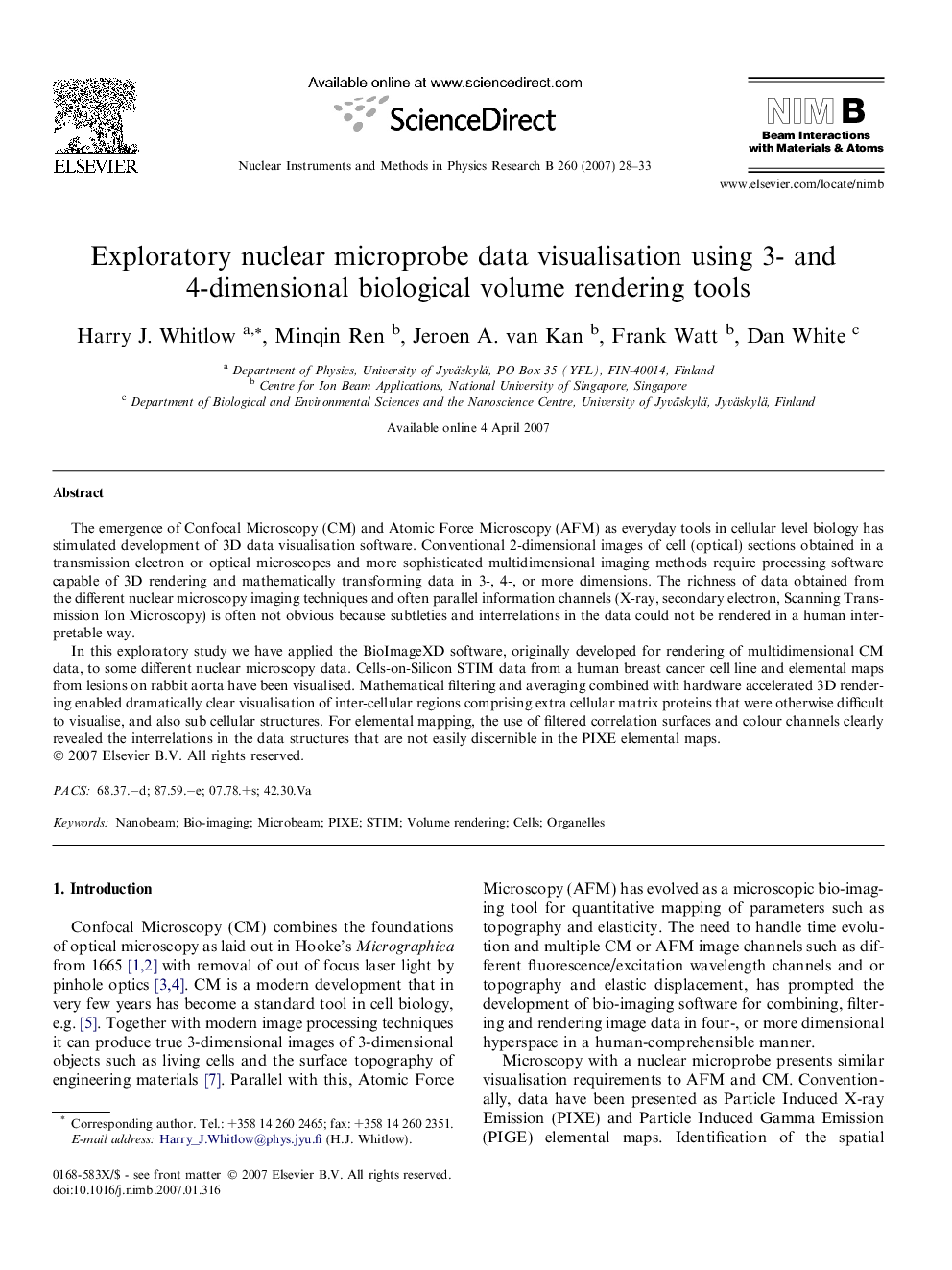| Article ID | Journal | Published Year | Pages | File Type |
|---|---|---|---|---|
| 1687720 | Nuclear Instruments and Methods in Physics Research Section B: Beam Interactions with Materials and Atoms | 2007 | 6 Pages |
The emergence of Confocal Microscopy (CM) and Atomic Force Microscopy (AFM) as everyday tools in cellular level biology has stimulated development of 3D data visualisation software. Conventional 2-dimensional images of cell (optical) sections obtained in a transmission electron or optical microscopes and more sophisticated multidimensional imaging methods require processing software capable of 3D rendering and mathematically transforming data in 3-, 4-, or more dimensions. The richness of data obtained from the different nuclear microscopy imaging techniques and often parallel information channels (X-ray, secondary electron, Scanning Transmission Ion Microscopy) is often not obvious because subtleties and interrelations in the data could not be rendered in a human interpretable way.In this exploratory study we have applied the BioImageXD software, originally developed for rendering of multidimensional CM data, to some different nuclear microscopy data. Cells-on-Silicon STIM data from a human breast cancer cell line and elemental maps from lesions on rabbit aorta have been visualised. Mathematical filtering and averaging combined with hardware accelerated 3D rendering enabled dramatically clear visualisation of inter-cellular regions comprising extra cellular matrix proteins that were otherwise difficult to visualise, and also sub cellular structures. For elemental mapping, the use of filtered correlation surfaces and colour channels clearly revealed the interrelations in the data structures that are not easily discernible in the PIXE elemental maps.
